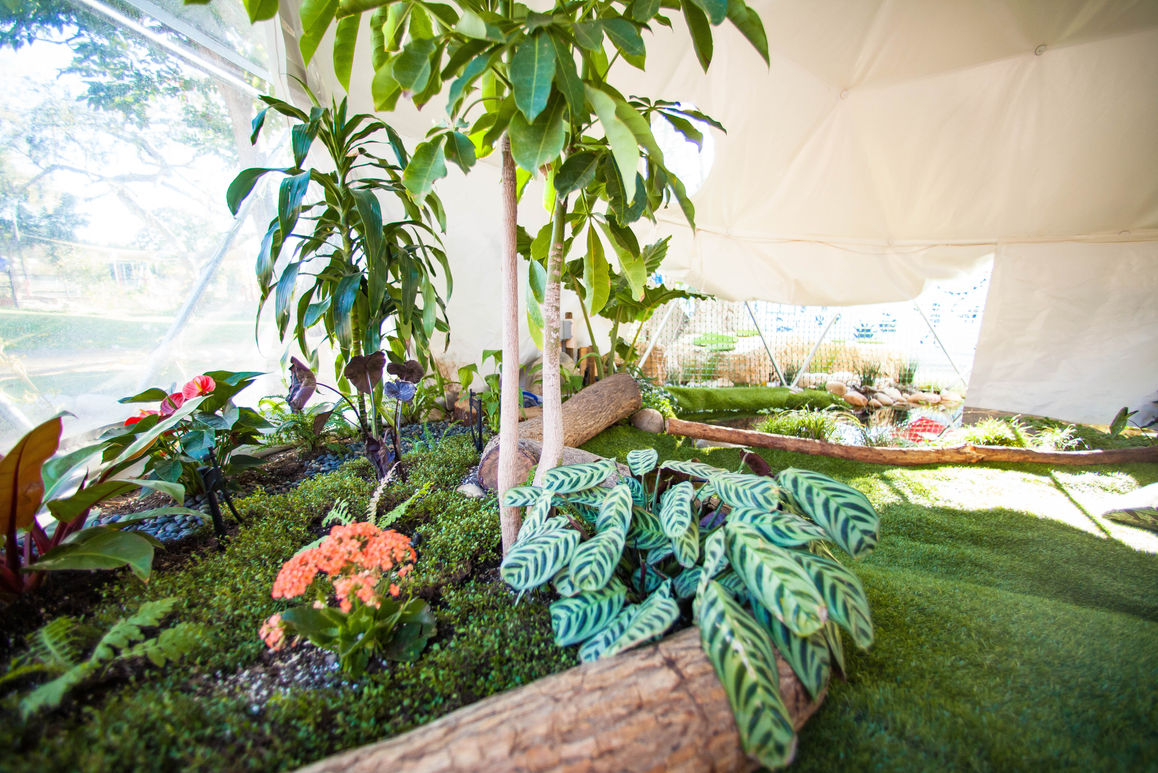


The ClassroomsOF THE
FUTURE

ARE Breathing

ARE BEAUTIFUL

ARE BioPHILIC

Classic
Collection
25% Off
The Sacatella Creek biolibrary
& acoustic sanctuary
is one of them...


Children enter the dome barefoot and walk across a small stream to a green seating area for reading, play, or self-reflection
Clay sensors tucked away in the plants trigger recordings of animals when touched
The BioLibrary may help mitigate issues such as ADD/ADHD, stress, depression, and anxiety by allowing children to be free play in a natural setting.

Allowing children to free play in a natural setting can stimulate natural curiosity and spontaneous learning.
When the children are still in one of the five sitting pods, biomagnetism sensors trigger the sonic elements that together constitute a natural biome

Plants from a Madagascan Rainforest create a lush, healthy environment, while native plants on the exterior of the dome provide habitat for the endangered migratory Monarch butterflies and other pollinators
Scroll RIGHT For MORE PIX
Scroll RIGHT For MORE PIX
Designed and built by Mileece in 2013, her inspiration for the BioLibrary is rooted in renowned acoustic ecologist, R. Murray Schafer's vision of what he called 'acoustic playgrounds'. These were essentially environments where children in urban areas would be protected from the negative effects of industrial noise. The BioLibrary takes this a step further by fusing its own acoustic environment with interactive bioacoustic soundscapes, masking much of the sounds of traffic, machinery, and other noises from the urban environment.
Equipped with a surround-audio system, in-situ elements such as a stream and a pond within the dome, complement an array of rainforest sounds, each played back as children sit in the ergonomic sitting pods, group-sized seating areas dug out of the earth.
This renders the Biolibrary a sort of reverse playground where sitting still activates the environment and produces a calming and restorative acoustic sanctuary. With natural light, the increased levels of oxygen from the plants and the
water along with their contribution to filtering the air from common pollutants in the area, the BioLibrary formulates
a new and vital interpretation of a learning environment. It also creates a space for wonder-driven exploration
as children find a natural curiosity in the soil, insects, plants, and pond creatures that drives them to learn about our biosphere.
The Biolibrary quickly proved to act as a hands-on earth-sciences laboratory not only within the
dome, but also outside in the butterfly way station native plant garden. A habitat for monarch butterflies
and other native pollinating insects, children experience the life cycles and patterns of the local biome.
Serving as a retreat for kids both in groups and individuals, the BioLibrary has become a regular place
for meditation and wellness, as well as concentrated reading and studying. In sum, it offers the key
ingredients Richard Louvre and other notable researchers in childhood development deem essential
to healthy growth mentally, socially and physiologically.


















































